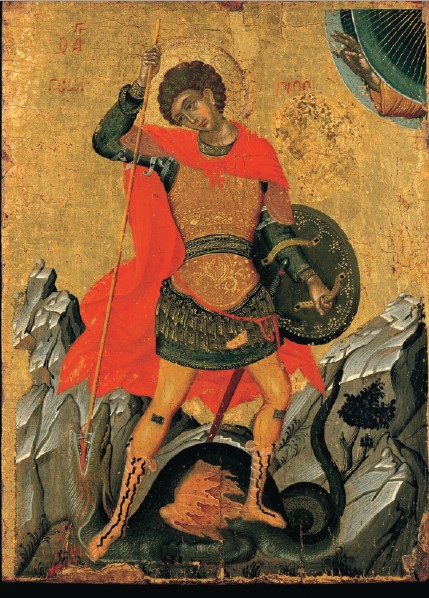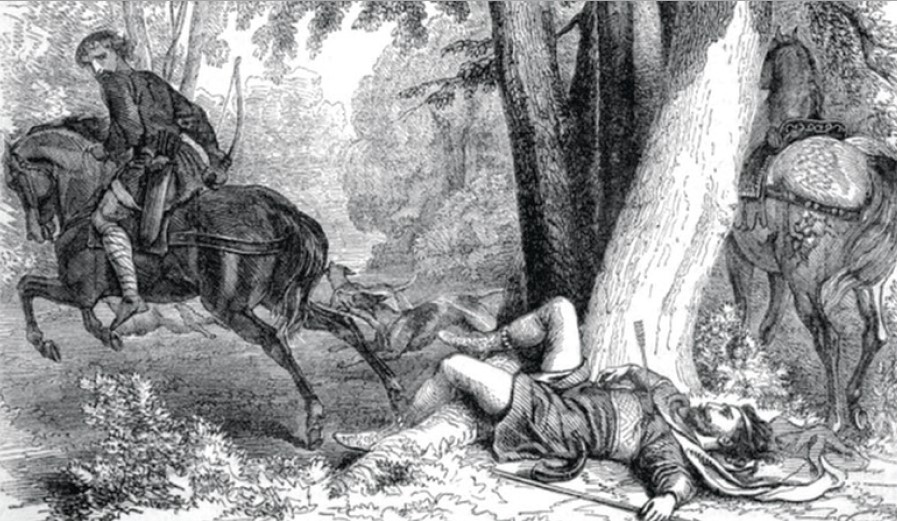Friday 1st May 2020
The CHC @ The Catholic Universe
Easter Saints: Anselm and the faith that seeks understanding
Stefan Kaminski
St Anselm, together with St George, offers a clear model for a pragmatic faith during the difficulties of lockdown.
This last week has seen the feast days of two ‘English’ saints, one perhaps more recognised than the other: St George on the 23rd April, and St Anselm of Canterbury on the 21st April.
Apart from their faith, what they do have in common is that neither, despite being associated with England, was English! While St George was born in Cappadocia (modern-day Turkey), St Anselm hailed from Aosta in northern Italy.
Both are fitting saints for Eastertide, however. The story of St George requires no retelling, but his emblem – the red cross – is a reference to Christ’s saving death, to which he joined his own martyrdom at the hands of the Emperor Diocletian in the year 303. The dragon he fought is most commonly taken as a symbol of his conquest of the devil, by means of his faith and fortitude.
St Anselm is a somewhat contrasting figure to the Roman soldier, but no less staunch and heroic in a different age and place. Born in 1033 or ’34, he came to England via the Benedictine monastery of Bec, in Normandy. While a monk at Bec he quickly gained a reputation for his great intellect and profound spirituality, thus also further increasing the monastery’s already-established reputation as a centre of learning.
In 1078 he was elected as Abbot of Bec and it was this that first brought Anselm to England. William the Conqueror had previously granted lands both in Normandy as well as in Canterbury to the Bec monastery; as the Abbot, Anselm was required to visit these lands on certain occasions.
By the time the incumbent Archbishop of Canterbury died in 1089, William had been dead two years and had been succeeded by his son, William Rufus. The younger William was a tyrant, who had only just been kept in check by the previous Archbishop of Canterbury. Once his grasping nature took hold, however, injustices flowed.

Among these, he kept deferring his permission for the replacement of the various vacant bishoprics while he seized their revenues year on year, and left dependent communities in near-poverty. It was only when he became violently sick and seemed to be on his deathbed that he returned briefly to his conscience, fearing for his eternal salvation. From this state he not only settled outstanding debts, granted pardons and fed prisoners, but he also nominated the widely-esteemed Anselm as Bishop of Canterbury.
The reluctant Anselm accepted the position, but used every occasion and means to try to both reconcile the King with Rome and reform the Church in England. (William Rufus’ momentary penitence had quickly disappeared as he regained health.) Anselm’s continual struggle against the king’s injustices, his rampant passions and his manipulation and censoring of the Church eventually forced Anselm to leave the country to seek the Pope’s support.

At a council with Pope Urban II, at which the situation in England was also discussed, Anselm yet again demonstrated his Christian compassion. The Pope was about to excommunicate William Rufus on the advice of the council, when Anselm threw himself at the Pope’s feet and begged for mercy for his nemesis. The excommunication was delayed. In the end, however, William died suddenly during a hunting accident before Anselm could return to England or reconcile him fully with the Church – something that caused the saint great bitterness.
Anselm’s nobility of soul and character can be understood both by his contemplative detachment from this world and through his motto, ‘Faith seeking understanding’. His greatest pleasure was in contemplating God, and every object served the purpose of raising Anselm’s mind to his Creator.
His motto, while easily misunderstood, is eloquent in its simplicity: faith, for Anselm, is neither a blind belief nor even primarily an act of the intellect or mind. Faith consists in the action of our will: a movement of love that comes from the heart, and an active desire to do God’s will. Such a faith “seeks understanding”, in that it wants to know God more deeply. In other words, faith is first of all a state of desire or a willing, rather than a state of thought, or of the mind.
This Easter has perhaps been a particularly challenging and opportune moment for assessing our own faith. In a sense, the best measure of this has been the extent to which we missed the liturgy and the Sacraments, for it is indeed through the Sacraments that the Resurrection of Christ touches us and that the graces are given to transform us into a “new creation” (2 Cor 5:17).
Equally, without being able to actually participate in the Church’s liturgies, we have had to rely more so on our own motivation – on our faith – to engage with the Easter mystery.
The lockdown is making life harder for many (if not most), particularly by challenging our internal resources. It is, however, an opportunity to grow in faith. Both St George and St Anselm are strong characters of faith because their lives were built by fixating their hearts on God, and everything else was motivated by that.
This locked-down Eastertide, the one thousand, nine hundred and eighty-seventh Easter in human history, is an opportunity to delve more deeply into our hearts, to discover and nourish a greater capacity for loving the God who gave His life for us.
Prayer of St Anselm
I confess, Lord, with thanksgiving, that you have made me in your image, so that I can remember you, think of you, and love you.
But that image is so worn and blotted out by faults, and darkened by the smoke of sin, that it cannot do that for which it was made, unless you renew and refashion it.
Lord, I am not trying to make my way to your height, for my understanding is in no way equal to that, but I do desire to understand a little of your truth which my heart already believes and loves.
I do not seek to understand so that I can believe, but I believe so that I may understand; and what is more, I believe that unless I do believe, I shall not understand.
Stefan Kaminski is the Director of the Christian Heritage Centre, Stonyhurst.

